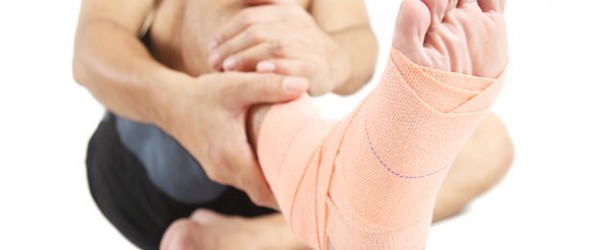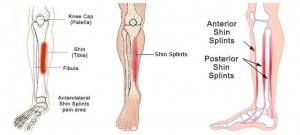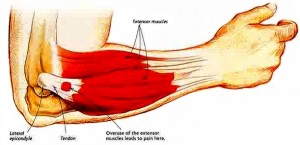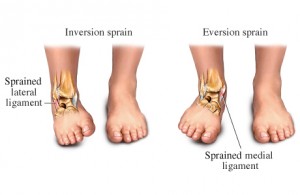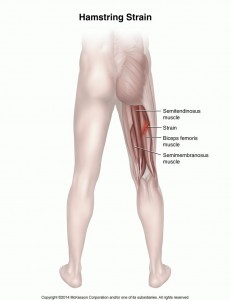Hi, everyone,
Whether you’re a weekend warrior or an avid health and fitness fanatic, as much as you take the precautions to avoid injury, unfortunately the most common sports injuries come from overuse.
You would think that exercise would be good for us, but if you’re not taking the time to warm-up and cool down, you can put your body at risk from not only a simple injury, but in rare cases life changing injuries that will need treatment for years after and cause you to have to change your fitness routine all together.
For the most part, many can be prevented with the appropriate care, but we often only have ourselves to blame as we push our bodies to the point of breaking.
Injuries are not only frustrating, but they can also take weeks and months of recovery time which can mean you’re out of action for longer than you may wish to be. Especially if you play for a team sport.
Despite taking precautions to avoid injuring yourself, there are some injuries which are more common than others. These are most often the areas of our bodies which are getting excessive overuse and may incur high pressure and strain when you’re performing fitness.
Shin Splints
If you’re a regular runner you will no doubt have unfortunately suffered from shin splints at one time or another on your road to fitness.
As a common injury especially in those that training for marathons or half marathons, this can be caused by a number of varying factors such as irritated and swollen muscles from overuse, tiny stress fractures in the lower legs bones, and even ‘flat feet’.
In many cases shin splints may occur when you’ve tried to ramp up your workout and increase the intensity, or even changing the surface you run on, but they are completely avoidable.
When your shin splints first occur it’s essential that you rest to give your body time to heal.
It’s frustrating we know, but you’ll only prolong the injury and make it worse if you don’t allow enough time for your body to recover.
Ice your shin and take an anti-inflammatory, and if the problem persists visit a doctor to ensure there are no fractures that may be need to be investigated.
In many cases shin splints can be avoided with properly fitted running shoes.
If you’re a serious runner you’ll know that having the correct trainers will only help to avoid any injuries and enable you to run with comfort.
A Gait Analysis should be done before you purchase your running trainers, as this will help to access your running style and type of support your foot needs.
Many people see this as a cost they don’t need as properly fitted running shoes certainly don’t come cheap, but if want to avoid this awful pain it’s worth every penny.
Tennis Elbow
Unfortunately this injury isn’t just exclusive to those that play tennis. No matter your sport or chosen activity, Tennis elbow is caused by overuse of the arm, forearm and hand muscles. Whether an abrupt injury or a subtle niggling pain it will slowly increase around the outside of the elbow, which can be worsened when doing the most simplest of movements.
Surprisingly Tennis elbow affects 3% of the UK’s population overall, and as many as 50% of Tennis players during their careers.
It’s an unavoidable injury if you take part in a sport that involves repetitive movements, and if the issue does occur it’s best to seek the guidance of a physiotherapist who can advise you on stretching techniques and fit a splint.
Sprains
You can spend so much time trying to stay fit and unhealthy, but amongst the benefits there also comes the downfalls of being active as you ultimately put your body at more risk from sprains and strains.
From falling awkwardly during exercise to twisting in the wrong way, the pain caused by a sprain can be mild to severe depending on the area that you’ve damaged.
Quite often there’s a horrible sound to go along with your injury, so you’ll know if you’ve done something wrong.
For any sprain a consultation should be followed out by your doctors as soon as possible so that they can understand the severity of it and assign the best remedy. Swelling, bruising and being unable to walk are all signs that you’ve definitely done a good job.
In very rare cases of ligament damage you may need surgery, but the general method of care is to rest and compress with ice.
Although not completely preventable, potential sprains can be avoided with the correct supports, especially for ankles as this is the most commonly sprained area.
Hamstring Pull
Running really has a lot to answer for when it comes to fitness, as once again a hamstring pull is commonly found in runners.
When a muscle is overstretched from a variety of movements, the hamstring can pull and cause a whole host of pain, as well as making it difficult to move and even walk.
You may have even seen footballers get this agonising injury when on the pitch during a game, as with the intensity of their running it may sometimes involve a complete tear.
Ben Barker Physiotherapist at Total Health Clinics comments that, “After years of working with the premiership football league, the hamstring pull has to be one that I’ve had to help many footballers recover from. In most cases it is due to dehydration which leads to the muscles cramping, thereby increasing their risk of injury.”
Like with many injuries there is no fool proof way to completely avoid it, but the risks can be minimised by paying attention to a regular stretching programme, and ensuring the muscle is strong and flexible.
Lower Back Pain
As weight lifting has become a big trend in fitness for both men and women, the occurrence of lower back pain is increasing.
You may be a strong advocate of body building, but we all know that form is far more important than the amount of reps you can do, or how fast you can do them.
Lifting heavy weights with a bad form is making this injury one that can be more detrimental to an active lifestyle than sprains and pulled muscles, especially when you think of the weight that is behind the injury in the first place.
The trauma of a bad lifting injury can remain with the body for months, and with only rest and the correct physical therapy will you be able to go back to the barbell.
Of course out of all the harm that you can do to yourself this is by far the most self-inflicted, as not only are you in charge of the weights you’re lifting, but you’re also the one picking them up.
Don’t try to be a macho man in the gym and lift more than you can handle, know your limits and lift with the correct form, using your legs rather than your back.
You may want to rush home once your activity is complete, but just take 10 minutes to cool down and stretch so that you can prevent injuries that will leave you sitting around for even longer!
![]()

